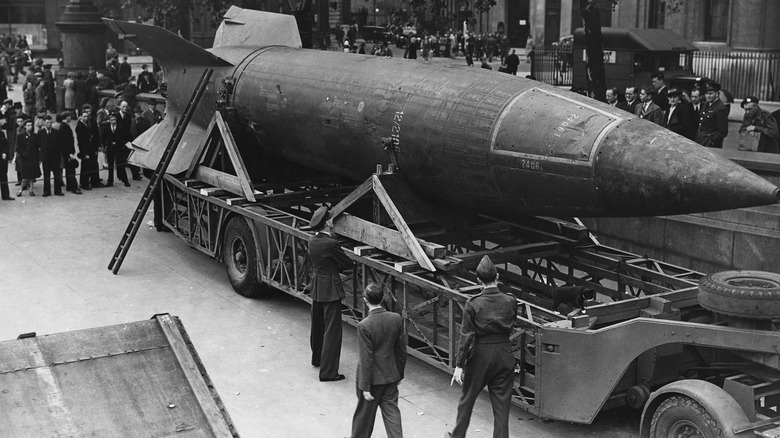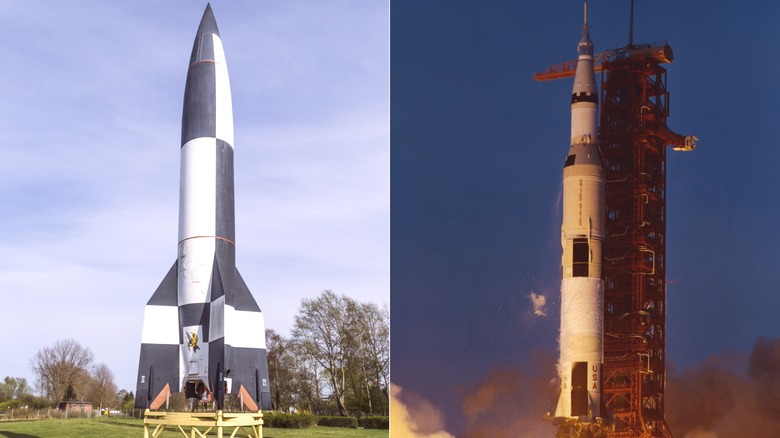Why Germany's V-2 Rocket Was A Global Gamechanger
Many important offensive and defensive technologies emerged from World War II. Still, the most significant is arguably the V-2 rocket, which terrorized civilians throughout its deployment and ushered in what eventually became the Space Race. The V-2 was the brainchild of Dr. Wernher von Braun, a German scientist and member of the Nazi Party and Allgemeine SS. His work established many rocket technology advancements that ultimately made space travel possible.
Beginning in 1944, the V-2 became the first ballistic missile and a weapon of terror capable of striking targets up to 220 miles from its launchpad. In addition to its long range, the V-2 carried a payload of 1,000 kg (2,200 lbs.), could fly at a ceiling of 60 miles, and travel at 3,400 mph, or Mach 4.43. Throughout WWII, the V-2, known as the "Vergeltungswaffe Zwei" (Vengeance Two) in German, was used to strike targets in the United Kingdom, Belgium, and France. Over 1,115 hit targets in the U.K., though it wasn't incredibly accurate (via National Air and Space Museum).
Between 1944 and 1945, the German war machine churned out around 6,000 V-2 rockets, though only half of them were launched before the war ended. When the war came to a close, the technology that went into creating the V-2 found its way to the Soviet Union, which captured plenty of V-2s, and the Americans, who launched the controversial Operation Paperclip to bring captured and surrendered German scientists to the U.S., leading to the development of NASA and the space race.
From battlefield bombardment to the Apollo Moon Landing
Around 1,600 scientists and their families came to the U.S. via Operation Paperclip. The program intended to further the development of rocket technology without letting the Soviets gain access, and it was largely successful. Von Braun and many others came to the States and became citizens while working to establish the basics of the American rocketry program. This significantly boosted American technological advancements in the field beyond what was possible at the time.
Operation Paperclip was and remains controversial, as it took people who actively supported the Nazis and German military with the bombardment of civilian cities. On top of that, facilities that manufactured V-2 rockets used a large force of slave laborers. Around 60,000 prisoners of war, Jews, Romani, and enslaved Germans toiled in the construction of the V-2. Despite this, the scientists involved and in charge of those facilities were welcomed to the U.S. to facilitate the demands of the Space Race.
The V-2 was a weapon of war, but at its core, the V-2 was a breakthrough in technology. Von Braun became the director of NASA's Marshall Space Flight Center and was at the center of the development of one rocket in particular: the Saturn V. The Saturn V was built from the ground up for one purpose: to send astronauts to the Moon. Development began in the 1960s, and by 1967, the first Saturn V took flight. Two years later, the rocket carried Neil Armstrong, Buzz Aldrin, and Michael Collins to the Moon, and it wouldn't have been possible were it not for the V-2.

